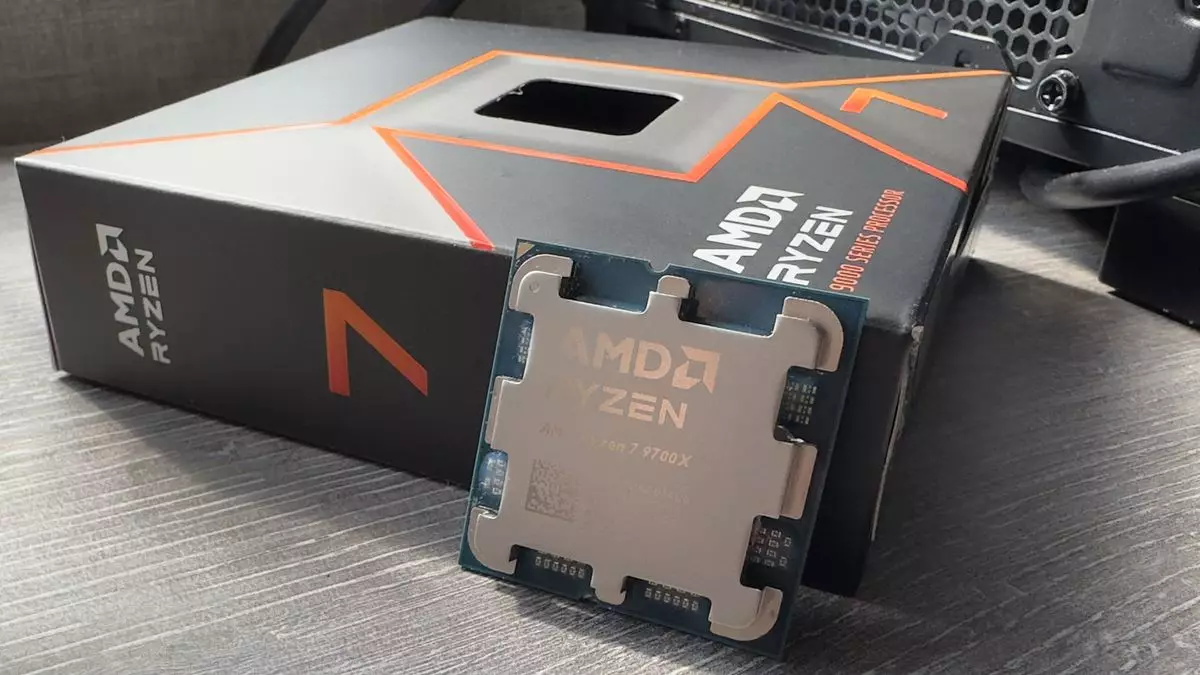The dynamics of global supply chains in the semiconductor industry have taken a notable turn with AMD reportedly shifting some production of its Ryzen 9000-series CPUs to a new foundry in Arizona operated by TSMC. This strategic decision marks a pivotal moment for AMD, showcasing not only trust in TSMC’s capabilities but also a broader trend towards localized manufacturing within the United States. However, this move is not without its complexities and broader implications for the semiconductor market.
AMD’s Ryzen 9000 series, which includes high-performance CPUs like the Ryzen 7 9700X, is celebrated for its chiplet-based architecture that enhances performance while optimizing manufacturing costs. Historically, AMD has leveraged TSMC’s advanced 4nm silicon technology from its Taiwanese factories. The recent claim by industry insiders, particularly Tim Cuplan from Taipei, that some of the Ryzen 9000 CPUs are now being fabricated at TSMC’s Arizona facility, underlines AMD’s commitment to a more diversified manufacturing strategy.
This shift to domestic production is particularly noteworthy; it reflects a growing trend among tech companies to establish a foothold in U.S.-based manufacturing. The decision to utilize the Arizona fab is not merely a logistical maneuver but also a fulfillment of AMD’s long-term vision to enhance local production capabilities amidst a backdrop of intensifying global competition and rising geopolitical tensions.
Despite the apparent advantages of producing chips domestically, TSMC has openly acknowledged that manufacturing costs in Arizona are significantly higher than those in Taiwan. This reality casts a shadow over the enthusiasm surrounding domestic production. The increased costs that TSMC plans to pass on to clients collaborating with its U.S. operations could challenge AMD’s pricing strategies and profitability.
Additionally, AMD’s Ryzen CPUs are inherently complex, composed not only of the CPU dies but also an I/O die that manages memory and other functionalities. This I/O die is still manufactured in Taiwan, indicating that Ryzen products are not completely ‘American-made’. Such nuances highlight the interconnectedness of global semiconductor manufacturing, which relies on a network of facilities and supply chains across various regions.
TSMC has ambitious plans for expanding its Arizona operations, including the establishment of multiple fabs targeting increasingly sophisticated nodes, with FAB 21-1 already operational, producing 4nm chips. However, the roadmap for cutting-edge technology reveals a deliberate lag—initially, advanced chips at the 3nm node will only be produced in Taiwan, delaying similar advancements from reaching U.S. soil.
The decision by manufacturers like AMD and Nvidia to utilize older nodes comes from a strategic evaluation of cost versus performance. While the latest silicon technologies hold potential for greater efficiency and innovation, AMD’s focus on the 4nm process for its Ryzen 9000 indicates a conservative approach that may prioritize reliability and market readiness over bleeding-edge specifications.
The evolving landscape of semiconductor manufacturing in the U.S. raises important questions about the feasibility and sustainability of localized production in the long run. While there are potential advantages such as reduced tariffs and shorter supply chains, companies must navigate the challenge of higher production costs. For AMD, the transition to U.S.-made chips could potentially yield dividends by securing a stable supply chain and reducing dependency on overseas facilities.
Moreover, as more companies explore domestic production avenues, we may witness a gradual reshaping of competitive dynamics in the tech industry. Future innovations may emerge as firms adapt to the new realities of cost structures and manufacturing capabilities.
The decision by AMD to commence production of its Ryzen 9000 CPUs in TSMC’s Arizona fab underscores a significant shift not only in AMD’s operational strategy but within the broader semiconductor industry. As the landscape continues to evolve, it remains to be seen how these changes will impact production costs, product performance, and ultimately, consumer choices in an ever-competitive market. The coming years will be crucial for AMD, TSMC, and the wider industry as they redefine their strategies in response to these new manufacturing paradigms.

